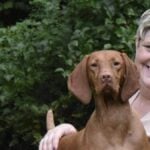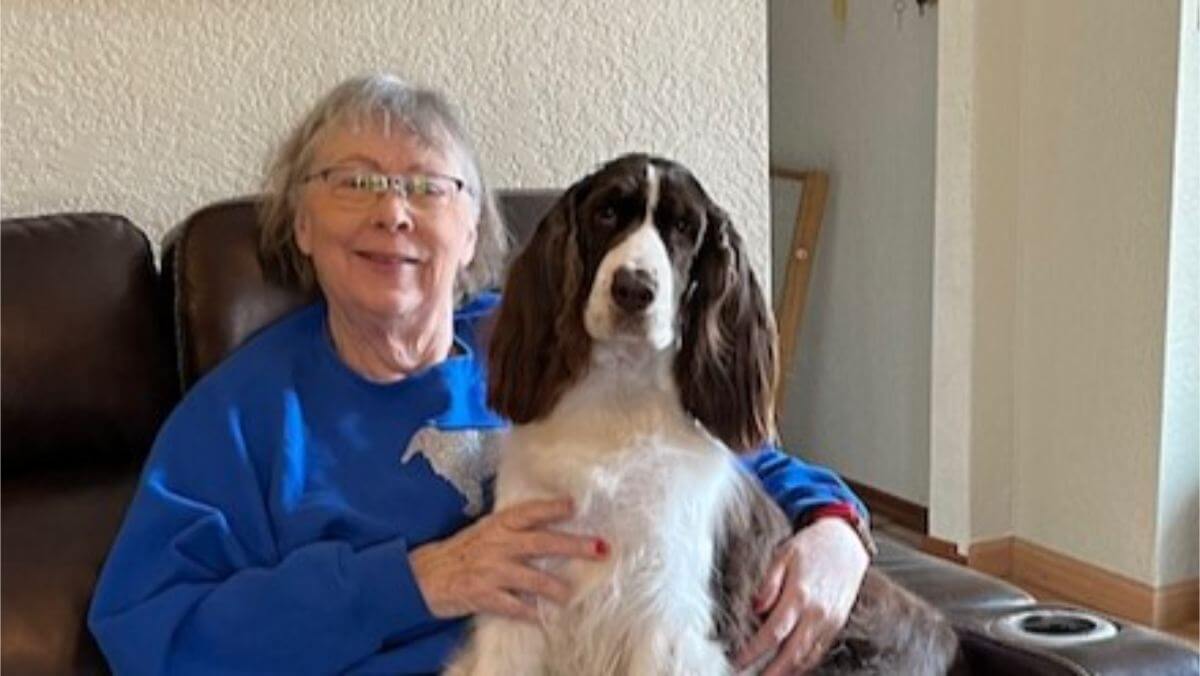
Home » Linda Riedel | Ramblewood English Springer Spaniels

1. I’m a retired teacher/administrator and live in beautiful Pasco, Washington, near the Columbia River. I started as a Junior Handler, showing Akitas and other Working breeds in 1963 in Southern California. I’ve had English Springer Spaniels since 1968 and bred my first litter in 1970 under my kennel name Ramblewood. As a small-time hobby kennel, I’ve reached goals I never would have imagined years ago.
2. I linebreed, some inbreeding, so I know what my puppies will probably grow up to look like. I don’t really evaluate puppies until about 7-8 weeks of age. By then, their personalities and qualities become apparent and I select puppies accordingly for their future owners. I do all health tests, starting with eye clearances and then all age hip/elbow tests as they become older. I’m proud to say I’ve been working with OFA since 1968. I’ve bred dogs that have exceeded in all venues: show rings, hunting trials, and performance and therapy work.
3. I believe today’s breeders are more aware of health and temperament testing than they were years ago, which is a very positive trend. A trend which I’m concerned about, however, is I feel there is way too much emphasis placed on show markings and excessive coat. Springers come in all correct markings and should have a moderate coat in order to be successful as a sporting spaniel able to do its job.
4. As a preservation breeder, I feel too many exhibitors are more geared to the win than to what our Breed Standard states. Too many exhibitors last for only a few years and breed to the current winner rather than studying pedigrees and having long-term breeding goals. I believe there are too many dog shows turning out “cheap” champions. Fewer shows would bring more exhibitors together, and hopefully, increase the learning environment for all.
5. Social media is good to promote purebred breeds to the public. The downside is that the high cost of promoting a dog is prohibitive for most exhibitors, and therefore, many very worthy dogs are not shown and seen by most. NOHS has helped owners continue to show their good dogs to some degree.
6. I feel there are many big challenges facing our sport today: the “graying” of long-term breeders and not many younger people staying in the sport with long-range goals; nationwide pressure to “rescue” a dog instead of buying a healthy puppy from a reputable breeder; AR’s power; and the “doodle” craze. I feel AKC needs to do more nationally to promote purebred dogs and help to educate the population on the values of owning a purebred dog. They also need to put more legal pressure on puppy mills.
7. I think AKC has done a good job with its many rules and guidelines to bring back a more positive venue at dog shows. Dog shows are a safe place now for families and the dogs. Lots of kennel clubs are now showing great support for Junior Handlers, which is the future of our sport.
As a preservation breeder, I feel too many exhibitors are more geared to the win than to what our Breed Standard states. Too many exhibitors last for only a few years and breed to the current winner rather than studying pedigrees and having long-term breeding goals.